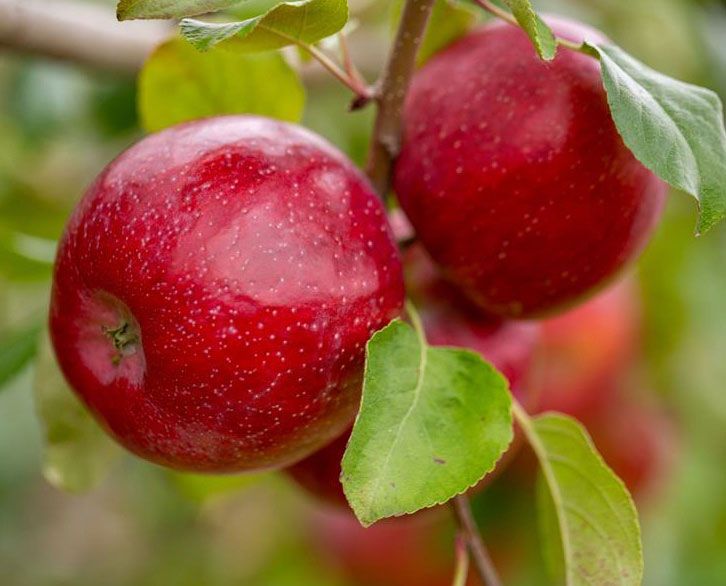Managing Peach Blocks When You Have No Crop
This has proven to be a difficult season in the Northeast weather-wise, especially for peaches. First, there was what we’re calling the Valentine’s Day Massacre on Feb. 14, where temperatures reached -16°F in the Hudson Valley at some locations, -8°F in northern New Jersey. Similar low temperatures in Massachusetts and Connecticut were observed.
When temperatures hit below -10°F, most peach buds are gone; it is -8°F for many of the white flesh peach varieties from California. The lows in New York and New England took out virtually every peach bud on Feb. 14.
Then early warm temperatures hastened bloom in peaches in New Jersey, Pennsylvania, and Virginia. These temperatures moved apple development along as well.
Extreme cold on March 21 and 22 and then again April 4-6 hurt peaches in Northern New Jersey, Pennsylvania, and south to Virginia. Some blocks (varieties) are completely gone, others have some crop to a partial crop. It is variety by variety, site by site.
Here are some tips to manage peach blocks that have 100% crop loss.
Thoroughly Prune
Prune hard and well. This is the time to do any corrective pruning to get trees down to their optimal height and shape. Do the fine pruning to eliminate the small shoots that would not have been able to support a good peach this season. The focus of your pruning is to let adequate sunlight into the canopy to form good pencil-size fruit shoots this season for next year and to form strong fruit buds on these same shoots this fall.
On an open center vase peach tree, 125 pencil-size fruit shoots are optimal. Shaded shoots will be weak and not be productive next year. Make sure to remove any and all dead or diseased wood, no matter how small. Dead wood allows disease to enter the scaffolds and trunk.
This would be the season to definitely summer prune in mid-June to July to keep adequate sunlight into the trees to keep fruiting wood healthy.
Cut Your Nitrogen
You need to reduce your nitrogen fertilization by 50%. My goal is to have 50% of my nitrogen applied as a complete fertilizer, based on soil and leaf tests, three weeks prior to anticipated bloom date. The second half of the nitrogen is applied (as nitrogen only) after shuck split once you know you have a crop, on fruiting blocks. No more additional nitrogen should be applied on non-fruiting peach blocks.
Watch Out For Fungi
You should be most concerned about opportunistic fungi. The most important to watch out for will be Cytospora canker, also known as leucostoma or perennial canker. In the Northeast, control of this disease is essential to prevent your peach blocks from declining prematurely. In northern New Jersey, we can maintain peach blocks for 20 years or more if we manage this disease.
The disease can only enter the peach tree (host) through a wound or dead tissue. Cytosopora invades healthy tissue through an injury or dead tissue. There are no whole tree sprays to control Cytospora canker directly, rather an integrated whole approach is necessary to control it.
To manage Cytospora in a no-crop season, prune to manage light, remove all dead wood, twigs now. Prune to promote wide branch angles, and only prune in dry weather. Control peach borers and Oriental fruit moth. Excise cankers on main scaffolds and trunks back to green tissue, paint the excised cankers with black tree paint containing Topsin M-70 WDG (Thiophanate-methyl, UPI). Paint the trunks/lower scaffolds every fall with the cheapest exterior white latex paint available as a white wash, 50/50 with water to prevent winter and southwest injury.
You should not have to worry about brown rot or rusty spot. But, you will need to control peach scab, even without fruit to limit the buildup of inoculum on peach twigs. Fungal sporulation begins at pink, according to Dr. Norm Lalancette, Rutgers Extension Fruit Plant Pathologist. Normally Captan fungicide applications begin at petal fall and continue through June to prevent scab. He suggests Captan 80 WDG (N-Trichloromethylthio-4-cyclohexene-1,2-dicarboximide) at 2.5 pounds per acre from petal fall through June. Sulfur is also effective against scab, and should be used at the same timings but more applications may be needed if washed off by rainfall.
You also need to limit the buildup of bacterial spot inoculum in the tree. Control can begin with using copper for peach tree leaf curl in the fall after leaf drop and in the spring before bud swell. This reduces the bacterial inoculum levels. Use either low rates of copper, beginning at petal fall or antibiotics. FireLine and Mycoshield are the two oxytetracycline products available for stone fruit. Without a crop, I would not use antibiotics, but would consider using a low rate of copper.
Insect Control Is Key
Without fruit, you still need to control the presence of some pests.
Lesser and greater peach tree borers can be controlled with one application of Lorsban 4E (DowAgroSciences, chlorpyrifos) applied the first week of September at 1.5 quarts to 100 gallons as a trunk spray. As we face the registration loss of Lorsban in tree fruit, this would be a good year to learn to use mating disruption for peach borer control in stone fruit.
I have used the Isomate PTBDual (Pacific Biocontrol, insect pheromone) mating disruption ties for more than seven years with 100% success in my research orchards. Make sure to use the labeled rate of ties per acre and get them out on time.
Oriental fruit moth will cause flagging on trees and that can provide a site for infection by Cytospora canker. Multiple insecticides are needed for controlling this pest timed with growing degree days. I have used mating disruption ties most effectively on peach and apple for this pest.
This pest can also build up from year to year if not controlled.
Note: Make sure to follow all state and federal labels when using any pesticide, the label is the law!
Congratulations Win!
Win Cowgill, a longtime tree fruit contributor to American Fruit Grower® and Western Fruit Grower® magazines, has retired from Rutgers University as an area fruit Extension agent and professor. He retired after 38 years of service on April 1. But, don’t let the term “retired” fool you. Win says he’s even busier now, working as a consultant, where he continues to do contract research.










